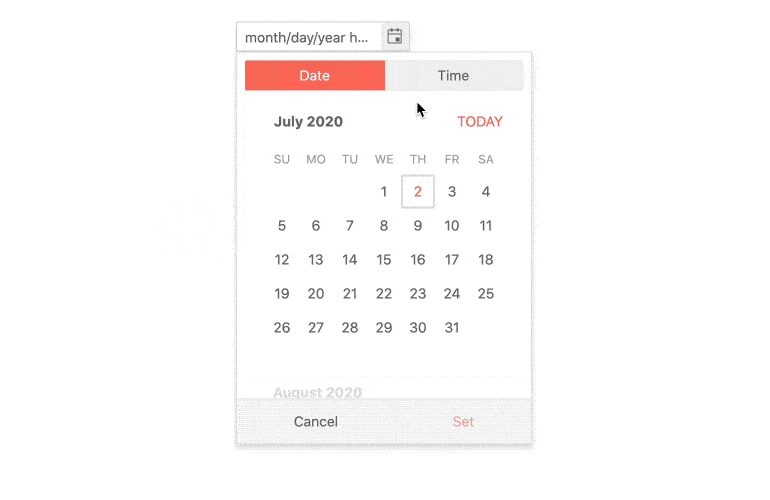
Security News
npm Phishing Email Targets Developers with Typosquatted Domain
A phishing attack targeted developers using a typosquatted npm domain (npnjs.com) to steal credentials via fake login pages - watch out for similar scams.
@progress/kendo-angular-dateinputs
Advanced tools
Kendo UI for Angular Date Inputs Package - Everything you need to add date selection functionality to apps (DatePicker, TimePicker, DateInput, DateRangePicker, DateTimePicker, Calendar, and MultiViewCalendar).
- This package is part of Kendo UI for Angular—a commercial UI library.
- To use this package, you must install a license key file, whether you are on a paid license or a 30-day free trial. To receive a license key, either purchase a license or start a free trial.
- Adding a valid license key file ensures a seamless experience during the trial period—no watermarks, no warnings, and full access to all components and features.
- Trial users can register for a free license key file. Without it, your trial may be interrupted by visual indicators or functionality limitations.
- Additionally, for the period of your license, you get access to our legendary technical support provided directly by the Kendo UI for Angular team!
- Learn more: https://www.telerik.com/kendo-angular-ui/components/licensing
Start using Kendo UI for Angular and speed up your development process!
The Kendo UI for Angular Date Inputs package is a collection of seven components designed to add date selection functionality to your applications. Whether you need date input fields or calendar pickers, everything is inside. Each component is highly customizable, high-performance, and well-documented.

Among the many features which the Kendo UI for Angular Date Inputs deliver are:
For any issues you might encounter while working with the Kendo UI for Angular Date Inputs, you have the following support channels available:
Copyright © 2025 Progress Software Corporation and/or one of its subsidiaries or affiliates. All rights reserved.
Progress, Telerik, and certain product names used herein are trademarks or registered trademarks of Progress Software Corporation and/or one of its subsidiaries or affiliates in the U.S. and/or other countries.
FAQs
Kendo UI for Angular Date Inputs Package - Everything you need to add date selection functionality to apps (DatePicker, TimePicker, DateInput, DateRangePicker, DateTimePicker, Calendar, and MultiViewCalendar).
The npm package @progress/kendo-angular-dateinputs receives a total of 45,833 weekly downloads. As such, @progress/kendo-angular-dateinputs popularity was classified as popular.
We found that @progress/kendo-angular-dateinputs demonstrated a healthy version release cadence and project activity because the last version was released less than a year ago. It has 1 open source maintainer collaborating on the project.
Did you know?

Socket for GitHub automatically highlights issues in each pull request and monitors the health of all your open source dependencies. Discover the contents of your packages and block harmful activity before you install or update your dependencies.

Security News
A phishing attack targeted developers using a typosquatted npm domain (npnjs.com) to steal credentials via fake login pages - watch out for similar scams.

Security News
Knip hits 500 releases with v5.62.0, refining TypeScript config detection and updating plugins as monthly npm downloads approach 12M.

Security News
The EU Cyber Resilience Act is prompting compliance requests that open source maintainers may not be obligated or equipped to handle.